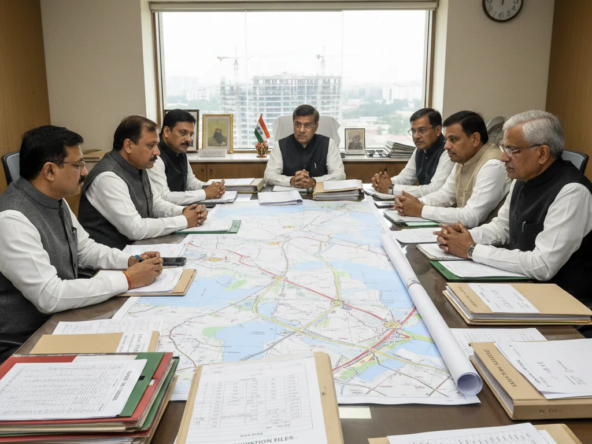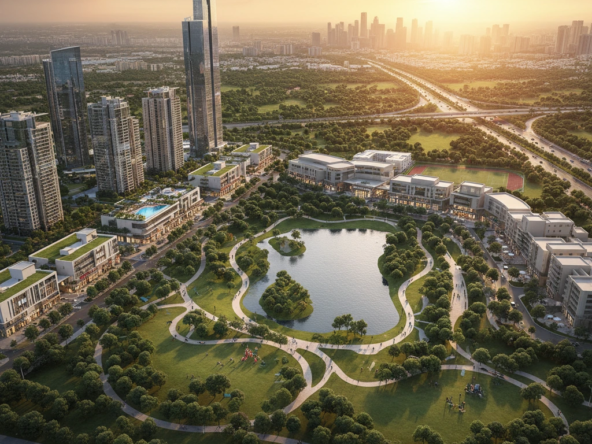✈️ Introduction: Airports as Catalysts for Urban Transformation
In a significant policy shift, India’s Civil Aviation Minister, Ram Mohan Naidu, announced plans to foster real estate development around upcoming airports.
Drawing inspiration from global cities like New York, London, and Hong Kong, the government aims to create vibrant economic hubs by integrating commercial, residential, and recreational spaces near airports.
This initiative seeks to propel the aviation sector’s growth to 15% in the near future.
🏗️ The Global Model: Learning from International Airports
Minister Naidu emphasized that airports in leading global cities operate at high economies of scale, supporting diverse activities including real estate development.
By adopting similar models, India plans to develop utilities around new greenfield airports, ensuring multiple large-scale economic activities.
The government’s strategy includes encouraging the creation of convention centers and hotels close to airports to maximize economic gains.
📈 Real Estate Surge: Evidence from Existing Projects
The impact of airport development on real estate is already evident in cities like Navi Mumbai and Noida. Property prices near airports in these regions have surged nearly 100% from FY21 to FY25, significantly outpacing citywide averages.
This growth is attributed to enhanced connectivity, infrastructure investments, and economic expansion. For instance, micro-markets near airports in Hyderabad and Bengaluru have witnessed property price increases of 74%, compared to 48% in the city overall.
🏢 SKJ Landbase’s Perspective: Strategic Insights

Sanjeev Singh, Founder and Managing Director of SKJ Landbase, a prominent real estate firm, underscores the importance of aligning real estate growth with national priorities.
He advocates for a holistic approach that integrates infrastructure development with urban planning to create sustainable and thriving communities.
🛣️ Government’s Commitment: Infrastructure Expansion
The Indian government has operationalized 88 airports, with many more in the pipeline. This expansion is part of a broader strategy to enhance connectivity and stimulate economic growth.
By integrating real estate development with airport infrastructure, the government aims to create multifaceted economic zones that drive employment, tourism, and investment.
🏙️ Future Outlook: A Vision for Sustainable Urban Development
Looking ahead, the government’s focus is on developing smart cities around airport corridors, incorporating sustainable practices and modern amenities.
These developments are expected to attract both domestic and international investors, contributing to India’s position as a global economic powerhouse.
The collaboration between government bodies, real estate developers, and urban planners will be crucial in realizing this vision.
🖼️ Visualizing the Future: Airport-Centric Developments
Kempegowda International Airport, Bengaluru, designed by Skidmore, Owings & Merrill, exemplifies the integration of airport infrastructure with urban development.-Urban Land
Navi Mumbai International Airport is poised to transform the city’s real estate landscape.The Economic Times
🏁 Conclusion: A Unified Approach to Urban Development
India’s strategy to develop real estate around airports represents a forward-thinking approach to urban planning.
This holistic development model promises to enhance connectivity, stimulate economic growth, and improve the quality of life for residents.




